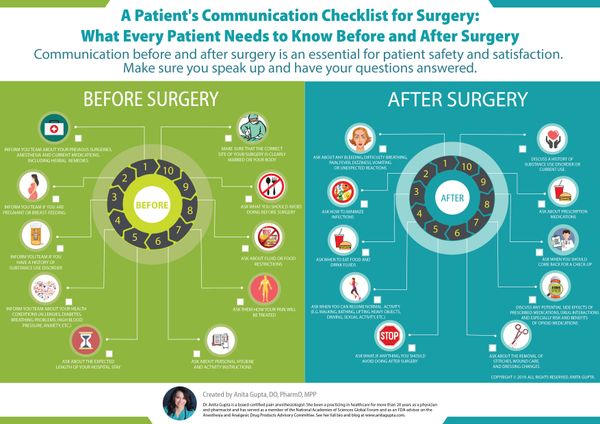The last thing you want to do when you’re experiencing debilitating pain is hop on public transportation or get in the car (perhaps with kids in tow) to go see your doctor. Instead, today, you can log into a telehealth appointment with your healthcare provider (HCP) for assessment, pain medication prescriptions, and follow-up care all from the comfort of your home. But, telehealth for pain management has its pros and cons, and it’s still evolving.
HealthyWomen’s recent WomenTalk episode brought experts together to discuss the future of telehealth and pain management. Healthywomen’s senior scientific advisor Monica Mallampalli, Ph.D., was joined by Dr. Anita Gupta, an adjunct assistant professor of anesthesiology, critical care medicine and pain medicine at the Johns Hopkins University School of Medicine, and Kate Nicholson, the executive director of the National Pain Advocacy Center.
“Telehealth really, really stepped in for people,” Nicholson said in the webinar. “It proved useful not just for immediate access, but also for people with chronic pain … going to an appointment actually increases their pain, even though they're going for treatment and reduction of pain.”
According to one McKinsey and Company report, telehealth use increased 38-fold between the pre-pandemic baseline and 2021. Among those who benefited from telehealth are women with childcare responsibilities, people facing transportation barriers and people living in rural areas who would otherwise have to travel long distances to get healthcare, Nicholson explained in a phone interview.
“Telehealth, quite literally, has been a lifeline for many, especially those who suffer from pain,” Mallampalli said in the webinar. “Telehealth has also become a significant method for clinicians to use telehealth visits to discuss treatment options carefully with their patients, especially their female patients.”
At the height of the pandemic, Gupta, along with a team of students and researchers from Princeton University, conducted a pilot study to understand the effectiveness of telehealth, assessing HCPs’ level of comfort with telehealth, their ability to communicate with patients — particularly about opioid education — and their overall ability to treat patients.
“What we uncovered is that [the experience] is very similar and if not better — potentially — than traditional methods of taking care of patients,” Gupta explained in the webinar. The study was small, but, Gupta added, “what it does indicate is that there is a possibility that telehealth and other innovations in this area could hold promise to help these patients that desperately need care … who suffer from pain, who need medication guidance, particularly related to opioid therapy.”
One of the biggest game changers for pain patients is that Covid-19 paved the way for providers to prescribe pain medication without having to see their patients in person. The Ryan Haight Act, enacted in 2008, requires HCPs to conduct at least one in-person examination before issuing a prescription for a controlled substance, including opioids.
In March 2020, as Covid-19 was rapidly spreading, the Drug Enforcement Agency temporarily suspended the in-person requirement as a result of the federal public health emergency declaration. This suspension is what has given HCPs flexibility to prescribe opioids and other controlled substances for pain management via telehealth appointments. The public health declaration has been extended multiple times — currently through July 15, 2022 — and is expected to be renewed through October 2022. But once it expires, the in-person evaluation requirement for these prescriptions will resume unless Congress or the Department of Health and Human Services intervenes.
“[Telehealth] provided a really important bridge, and it's one that we need to continue, because it does provide a level of access to care that we don't see, necessarily, throughout the healthcare system,” Nicholson said. But, she added, there’s much work to be done to iterate on what’s working, and fix what isn’t.
With any innovation, there are drawbacks. While telehealth has opened up access for many people, there are still disparities. People without adequate internet access or the know-how to join a video call may be left behind. One study found that young adults ages 18 to 24 (72.5%), those earning at least $100,000 (68.8%), those with private insurance (65.9%), and white individuals (61.9%) used video telehealth the most.
“We do have to be mindful of the digital divide and the fact that broadband services aren't widely available for all people; not everyone has a computer,” Nicholson said. “That's why it’s also important to have audio-only telehealth or virtual care available to people as well.”
Privacy is also a concern for women who have a house full of family or roommates who may overhear what’s being said in appointments, or worse, victims of domestic violence who want to maintain privacy from their partners. There are also confusing insurance reimbursement rules that aren’t clear on the state and federal level, in addition to restrictions meant to curb opioid abuse.
These may be some of the reasons why, when the Centers for Disease Control released its draft of the updated Clinical Practice Guideline for Prescribing Opioids earlier this year, prescription via telehealth was not addressed.
“We moved very quickly during the pandemic and we continue to, but innovation has challenges. There [is] a lack of available evidence-based information, still,” Gupta said. “When we talk about guidelines and best practices for a complex crisis, we are not there yet.”
The future of telehealth pain management is unclear, particularly in terms of opioid prescription. A bipartisan group in Congress introduced the TREATS Act to permanently extend some of the flexibility given to providers during the pandemic, and more than 70 medical organizations have asked the DEA to permanently waive telehealth prescribing restrictions. Nicholson advised that people who want to continue having this access via telehealth should speak up.
“It's really helpful to talk to your elected representatives, because that's what it's going to take,” she said. “I would call their staff and say, ‘Listen, telehealth is essential for me.’... I'm a big believer in people advocating directly with policymakers.”
- Fast Facts: 10 Things to Know About Women and Chronic Pain ... ›
- HealthyWomen's Talk Show, For Women By Women - HealthyWomen ›
- 6 Scenarios for When Telemedicine Is a Great Option - HealthyWomen ›
- How to Access Mental Health Care Using Telehealth - HealthyWomen ›
- Is telehealth as good as in-person care? A telehealth researcher ... ›
- Using Opioids to Manage My Cancer Pain - HealthyWomen ›
- Breast Surgery and Opioids: What You Need to Know - HealthyWomen ›







